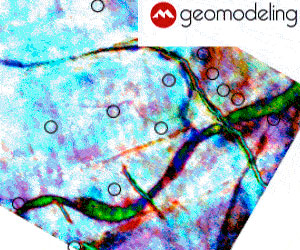In conjunction with amplitude-friendly simultaneous processing of time-lapse seismic data, we introduce a QC scheme that steers the processing towards optimal time-lapse repeatability. We compute NRMS errors between stacked traces for different vintages of a survey after each main step of simultaneous processing. A processing step (which may include intermediate steps) is considered acceptable only when its overall NRMS error value is at most equal to its value from the previous processing step. We demonstrate this QC scheme with a well-designed time-lapse dataset.

About the Author(s)
Jeff P. Grossman is Senior Geoscientist, Research and Applications, at Sensor Geophysical, a Global Geophysical Company. His passion for Theoretical Physics led him to pursue a B.Sc. and M.Sc. in Pure Mathematics (U of C), with an emphasis on the Mathematical Physics surrounding Relativity and Quantum Mechanics. During his M.Sc., and later as a Research Associate with the Geomechanics Project, he was introduced to the richness of Geophysics. Jeff went on to complete a Ph.D. (U of C, 2005) in Mathematical Seismology with Dr. Margrave and Dr. Lamoureux, and has studied waves and developed algorithms ever since. His thesis focused on Time-Frequency Analysis with applications to nonstationary wavefield extrapolation and Gabor deconvolution.
Jeff has broad industry experience, ranging from an internship researching converted-wave AVO analysis, to algorithm development in diagnostic ultrasound imaging for early detection of breast cancer. Prior to joining Sensor, he gained processing experience with the multicomponent group at CGGVeritas, including 3C-4D projects and shear-wave-splitting analysis over heavy oil.
Jeff enjoys research, scientific programming, data-driven computational algorithm development, development of processing flows, and automation of labour-intensive and error-prone processes. He is a strong proponent of multicomponent seismic technology and is committed to making significant contributions toward advancing this emerging field. He is a member of CSEG, EAGE, SEG, and ASA.











Join the Conversation
Interested in starting, or contributing to a conversation about an article or issue of the RECORDER? Join our CSEG LinkedIn Group.
Share This Article